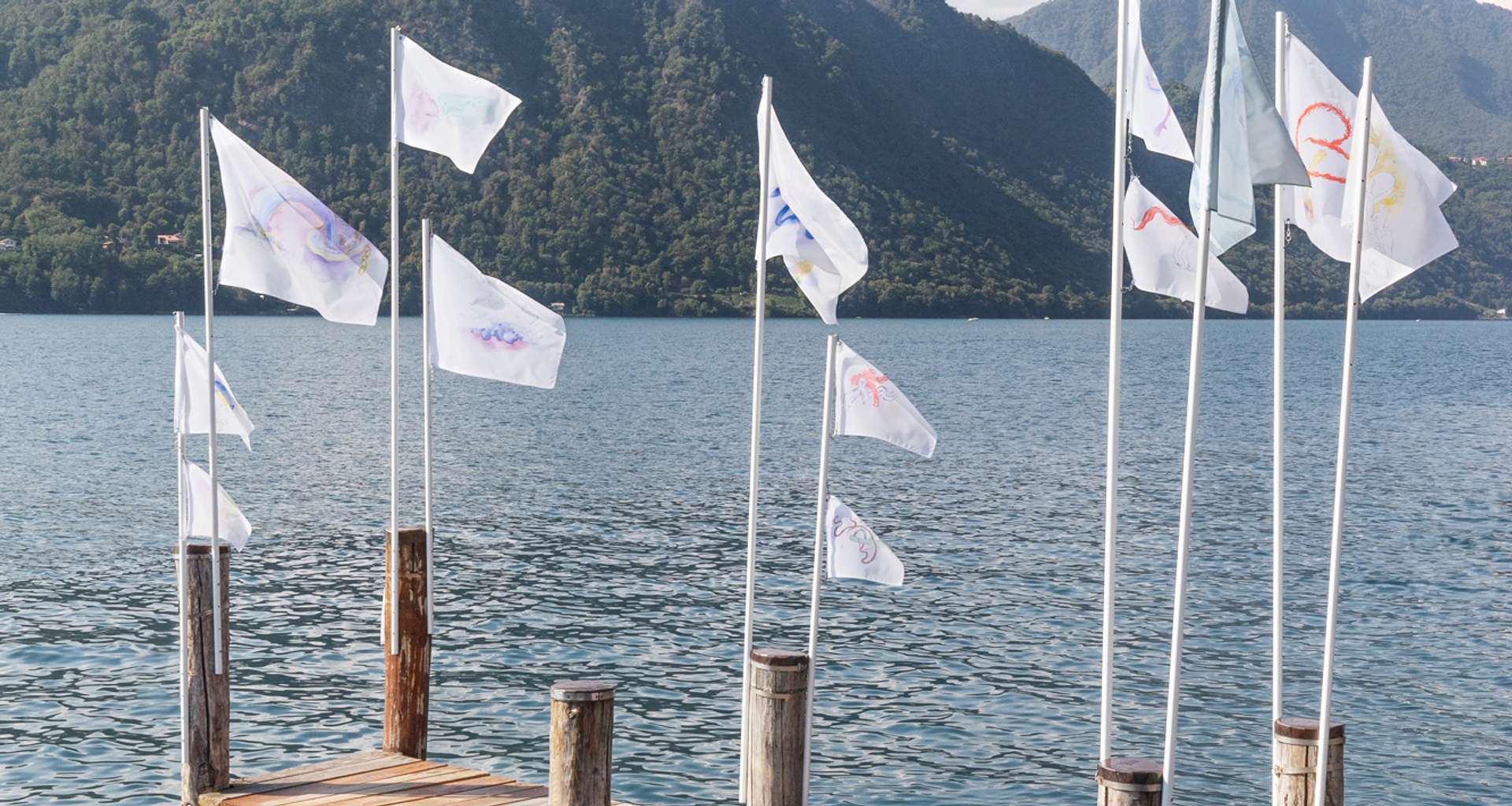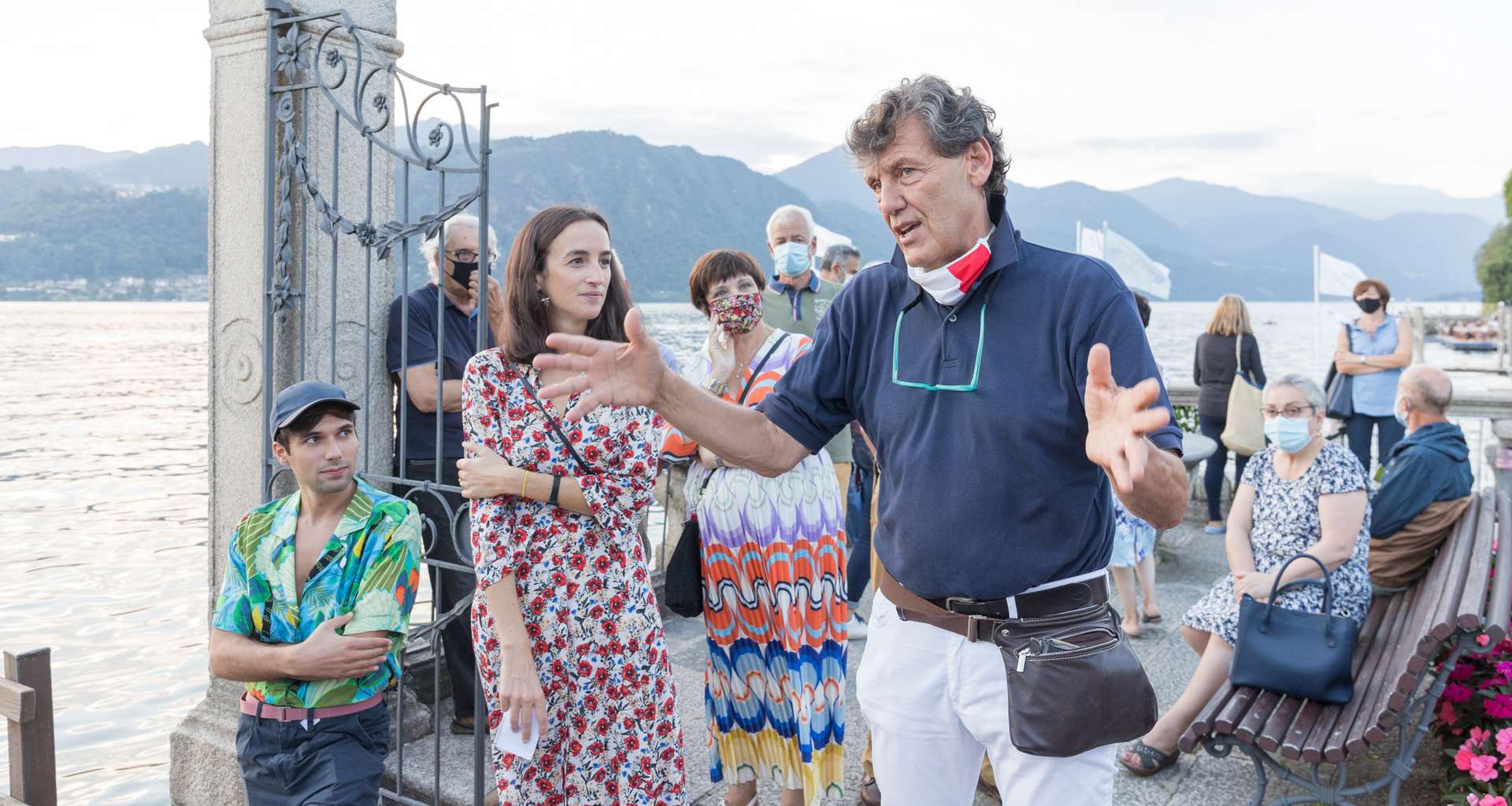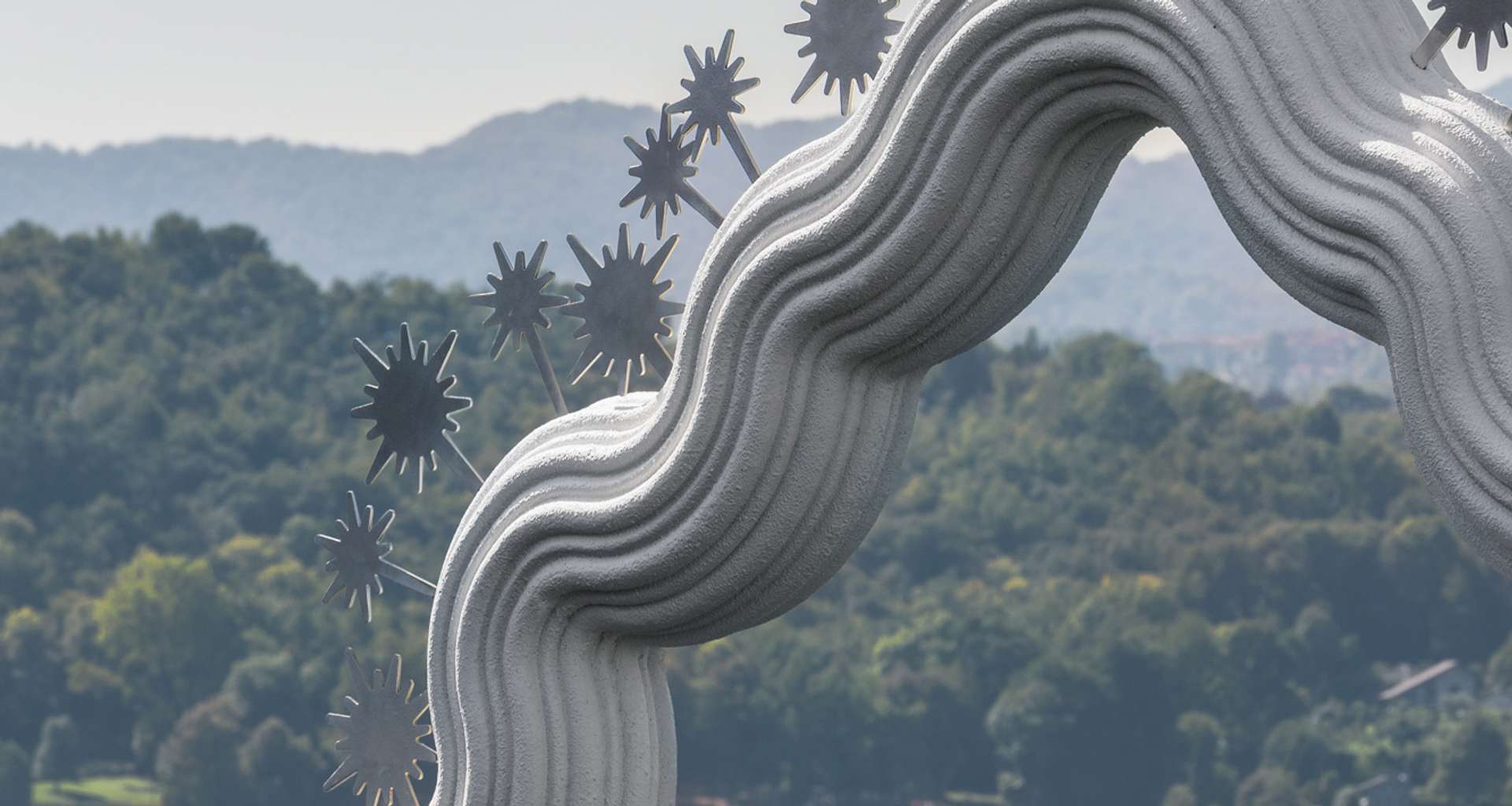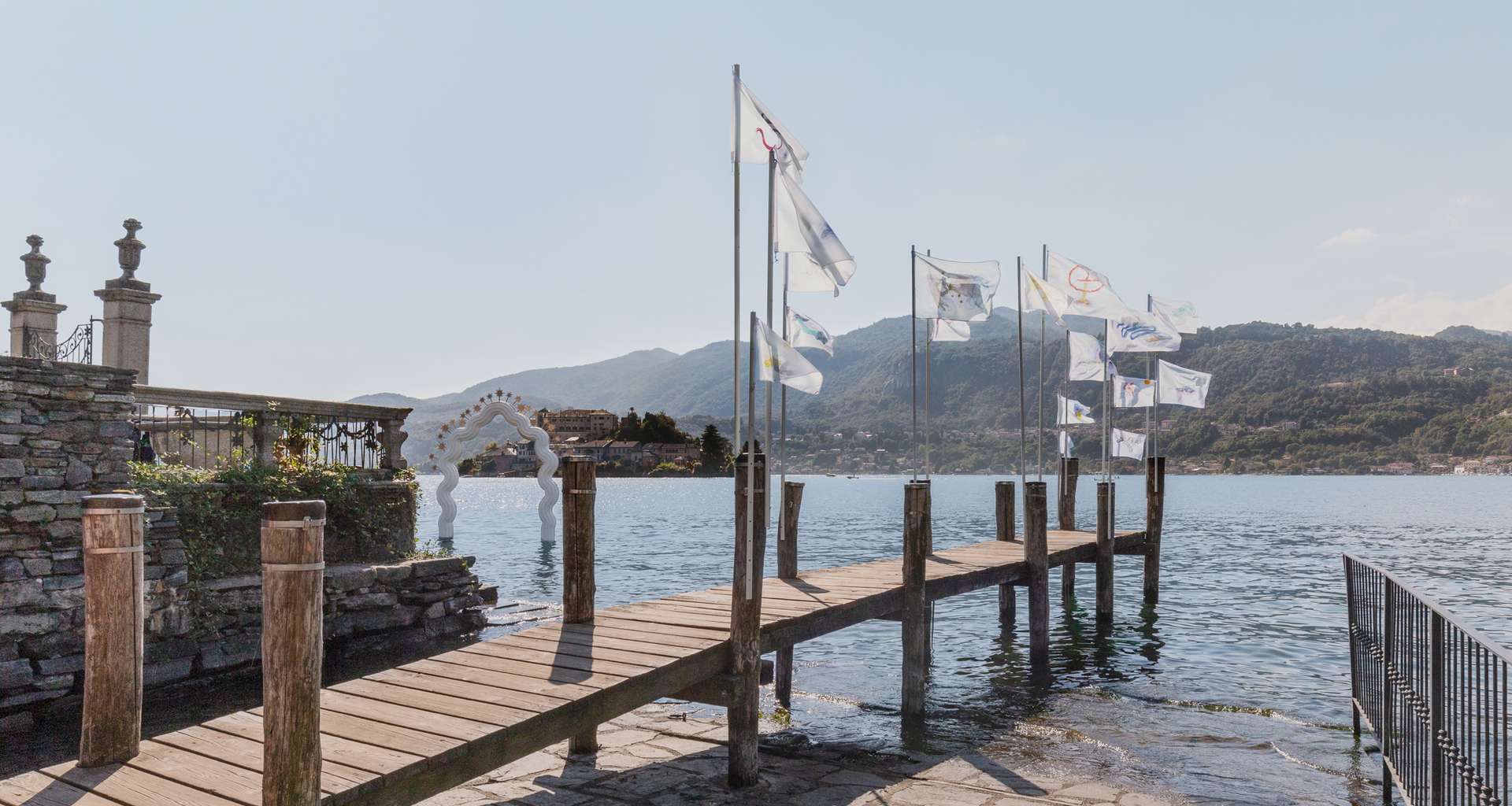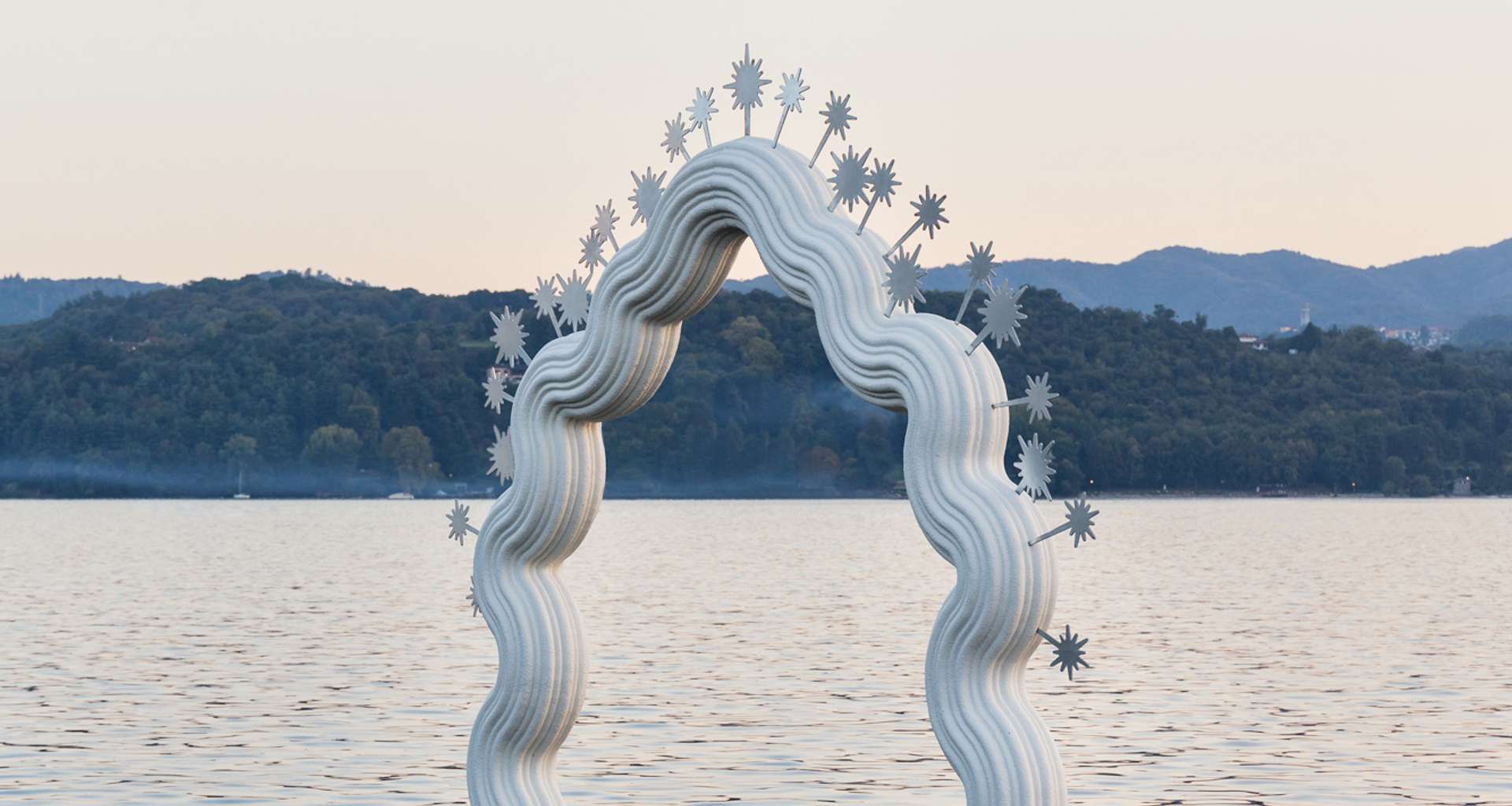In the ancient world, the word “oracle” referred to both a sacred place and a prophecy. Pilgrims went to a given location with questions about unknowns, waiting for the divinity to provide an answer. In Orta San Giulio, the artist created a “place-beyond”, a collection of passages between reality and imaginary dimensions. Not far from the garden of Villa Bossi, a mysterious portal – the Oracle – rises from the waters, begging to be contemplated and questioned from the shore. Spectators wait on a pier, where festive, hand-painted flags serve as banners of halted spells, magical figures, and traces of timeless oracles. The fantastical takes possession of the real, waiting to welcome whoever – or whatever – will pass under the arch seen in the distance.
These works were inspired by the village’s archaic identity, which contains a multitude of narratives and legends. It is said that San Giulio liberated the island from monsters, and that the largest among them took refuge in a cave. Centuries later, in that same cave, a large vertebra appeared, which is still preserved today in the Basilica. As Gianni Rodari’s Il Barone Lamberto tells it, a prophecy helped the protagonist survive on the island, the “Idyll of Orta,” with a mysterious kiss on the Sacred Mount between Friedrich Nietzsche and Lou Salomé. And finally, the island, the stage where many past wars played out, is now the site of a cloistered monastery, a place where silence and mysticism reign.
ORTA SAN GIULIO IS A PLACE WHOSE PAST FADES INTO UNRESOLVED TERRITORY. HERE, HISTORY AND STORY HOLD THE SAME VALUE. WHAT NEVER WAS HAS THE SAME IMPORTANCE AS WHAT, PERHAPS, REALLY HAPPENED. SO I LOOKED FOR AN IMAGE THAT COULD BE A FRAME OF REFERENCE FOR QUESTIONS ABOUT THE UNKNOWNS OF THE PAST, PRESENT OR FUTURE: AN ORACLE SUSPENDED OVER THE LAKE WATERS
Paolo Brambilla’s (Lecco, 1990) multidisciplinary artistic practice uses speculative processes and formal permutations, taking on or distorting different production and reproduction formats; they could be natural or artificial, real or virtual. Their aim is to address the infinite cycles of cultural product assimilation, dispersion and transformation. Assuming forms and transformations, following different paths, imitating movements, obscuring and repeating gestures, Brambilla has established a dense vocabulary of materials, symbols and references, moving by association between a variety of registers. In Brambilla’s artistic quest, the art object is conceived as a matrix of multiple approaches, and the artistic process a fusion. It’s a synthesis of radically divergent scales, rhythms and sources into an [apparently] congruent whole, the art object itself.
NOT FAR FROM THE GARDEN OF VILLA BOSSI, A MYSTERIOUS PORTAL – THE ORACLE – RISES FROM THE WATERS, BEGGING TO BE CONTEMPLATED AND QUESTIONED FROM THE SHORE. SPECTATORS WAIT ON A PIER, WHERE FESTIVE, HAND-PAINTED FLAGS
On the western side of the peninsula, where the Sacred Mount chapels stand, before the magnificent, mystical island of San Giulio, the village of Orta San Giulio is a renowned summertime resort and tourist destination. One thing attracting tourists to Orta, just as for the whole lake, is the event-packed cultural calendar, with staples like “Ortafiori” (a flower show taking place on the Salita della Motta), important musical events like the “Festival Cusiano di musica antica”, the “Settembre Musicale” held on the island of San Giulio, and the “Orta Festival.” The name Orta San Giulio comes from the evangelizing saint sent by the Emperor Theodosius in the fourth century to fight Arian heresy. First a Longobard territory, then a Frankish one, around 962 it passed into the hands of the Novara bishops via concession of Emperor Otto I, who took it from Berengario II after a historic siege. The bishops had to wait until the new millennium, however, before they could exercise real jurisdiction over the territory: in 1219, after several fights with the local lords, the episcopal hegemony was finally affirmed. It only ended in 1817, when power was transferred to the House of Savoy.

